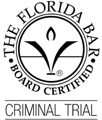DUI prosecutions may seem like simple cases in which the police focus their attention on a driver’s ability to perform the Standardized Field Sobriety Tests (SFSTs) or present the readings of the driver’s breathalyzer test. But none of this is admissible as evidence unless the police can first get over the first major legal threshold in a DUI case: Why did they stop the motorist in the first place?
Tampa’s Stechschulte Nell Law Firm has successfully defended hundreds of drivers accused of DUI in Hillsborough County and Pinellas County. In each of these cases, every police officer or sheriff needed to explain why they “reasonably suspected” the driver was breaking the law. Unless they could provide a legally valid basis for their suspicion, the DUI prosecution could go no further.
Let’s look at the first step of a DUI investigation, arrest, and prosecution. It’s called the “vehicle in motion” phase of DUI detection.
Constitutional Law Requires “Reasonable Articulable Suspicion” to Stop a Motorist
The law requires that police have a reasonable articulable factual basis to suspect that motorist is breaking the law before they can legally force a car to pull out of traffic and stop at the side of the road. A traffic stop is an “investigative detention” which is allowed by law only if the officer can state particularized facts justifying the stop.
When a police officer activates their cruiser’s overhead flashing lights to direct a driver to pull over, the law does not consider it to be an arrest. The officer does not need “probable cause” to pull a driver over. But the law does not permit an officer to stop a car merely on a whim, or because they don’t like the looks of the driver, or because they think a member of a minority group does not belong in a particular area.
An officer must develop reasonable objective facts to report when asked why they initiated the traffic stop or else the stop will be deemed illegal. If the initial stop was unlawful, then any evidence developed against the driver, including clear evidence of DUI, will not be admitted in a court of law.
What Can Justify a Police Traffic Stop?
Police officers are trained to look for specific flaws in a vehicle’s condition and in the way someone is driving before they can pull them over legally. There are many vehicle equipment failures or moving violations that will justify the police pulling over a motorist.
Any of the following are acceptable grounds for “reasonable articulable suspicion” to pull someone over:
- moving traffic violation (failing to stop at traffic control, speeding, no turn signal, illegal turn, etc.)
- an equipment violation (brake light out, headlight out, unsafe vehicle, excessive exhaust)
- an expired registration or inspection sticker
- unusual driving actions (weaving in traffic, moving slower than normal speed, tailgating,)
When a police officer suspects a driver is operating under the influence of either alcohol or drugs, they do not need to identify a DUI related observation to stop the vehicle.
The courts have approved police traffic stops motivated by suspicion of DUI or other illegal activity even if the original stop was based on an unrelated but valid code violation.
Visual Cues for a DUI Traffic Stop
During the “vehicle in motion” phase of a DUI investigation, police look for specific driver behaviors that are consistent with a driver operating under the influence. For example, drivers who are impaired by alcohol to a significant degree have a slower reaction time.
An officer following a suspected drunk driver will look for cues indicating that the driver is reacting slowly to road hazards, other traffic, and even curves in the roadway.
For example, where a sober driver would maintain a relatively steady presence in the center of a lane of traffic, an impaired driver tends to drift from side to side in a lane, or perhaps beyond their lane. At a curve in the road, an impaired driver will often drive deeper into the curve before turning, approaching the curb more closely than would a sober driver.
Risk Taking
Alcohol-impaired drivers frequently take more risks when driving as a result of alcohol’s tendency to reduce inhibitions and caution. An alcohol-impaired driver may speed excessively, drive aggressively, or attempt dangerous maneuvers.
While some of these risk maneuvers may not technically violate a specific traffic regulation, they are indicative of a driver who may not be exercising sober judgment. The officer will add these cues together, usually continuing to follow the suspected DUI driver until they can identify a more definite violation or until they judge the danger of an accident is too high to permit the driver to continue.
The Stopping Sequence:
The “vehicle in motion” phase of the DUI investigation is not over when the police officer signals the driver to pull over. Often, some of the most obvious signs of impairment occur during the stopping sequence.
The driver’s reaction to the flashing police lights can add significantly to the suspicion that the driver is under the influence.
Alcohol-impaired drivers commonly display some of the following behavior after the police activate their flashing lights:
- Slow response or no response at all — Drivers often continue to drive as they were despite the police lights. While they may eventually pull over, the reaction time between the activation of the police lights and the driver’s pulling over can indicate the driver’s inattention.
- Fleeing — As noted earlier, alcohol’s tendency to increase risk-taking can motivate a driver to try to escape from the police. Perhaps aware of their own impairment and wanting to avoid prosecution, a driver under the influence sometimes chooses a riskier option, flight. These scenarios often end badly with an accident in which the driver or another person is injured.
- The opposite driver reaction is also common. As soon as the police activate their flashing lights, alcohol-impaired drivers sometimes stop immediately, almost dangerously so.
- The lack of coordination can also cause an alcohol-impaired driver to drive up onto a curb or to strike the curb when pulling over. Again, these events only strengthen the officer’s grounds for suspecting the driver is DUI.
Read More > What to Do After a DUI Arrest in Florida
Tampa DUI Defense
If you were arrested and charged with a DUI in Hillsborough County or Pinellas County, contact the Tampa law firm that focuses on defending DUI charges every day.
We are ready to defend you. Contact us at 813-280-1244 to speak with experienced DUI attorney, Ben Stechschulte today.







